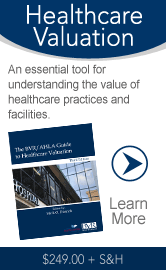 |
 |
Issue #15-1 | August 1, 2013

|
Hospitals outsource to cut costs In a prior Healthcare Value Wire, we pointed out that hospital finance leaders should consider outsourcing as a way to cut costs of back-office operations. A recent article describes how this trend is gaining steam in one locality, but with both nonclinical and clinical operations. Idea in action: Heritage Valley Health System in Western Pennsylvania outsourced its laundry service to save about $600,000 annually, spokesman J. Daniel Murphy told Trib Live, an online newspaper. It also outsources security at its two hospitals. The University of Pittsburgh Medical Center laid off about 130 medical transcriptionists and farmed out the work to Nuance, a technology company in Massachusetts. A company created last year by Highmark (Provider Supply Chain Partners) now handles purchasing and other supply chain functions for 15 hospitals in the area. More interestingly, however, is the trend of for-profit hospitals outsourcing clinical services to nonprofit hospitals, the article notes. For instance, UPMC has a nonprofit subsidiary that provides emergency department doctors and other staff to seven area hospitals. Indeed, outsourcing is a radical change, and there could be substantial push-back. For example, in the UPMC case, medical transcriptionists held a rally protesting the outsourcing. However, many hospitals are forced to take this route due to financial pressures. Also, a hospital’s core business is the medical care of patients. Outsourcing certain tasks allows the organization to focus its time and resources on its core business. Spotty results for ACO test projectThe first results of the Pioneer accountable care organization (ACO) initiative are in. This is a key project in the move by Medicare from a fee-for-service program to one based on quality of care. So-so, so far: Although the Centers for Medicare & Medicaid Services (CMS) announced “positive and promising” results from the first year of the three-year program, only 40% of the participants (13 out of 32) actually recognized savings. Of the rest, seven participants will leave the program and switch to the Medicare Shared Savings Program (MSSP) and two will drop out of the program entirely. The remaining 10 participants will stay in the program, but they have not seen any savings yet. Earlier this year, we reported that most of the Pioneer participants asked CMS to delay tying payments to quality outcomes, citing problems with the benchmarks they have to meet. Their request was denied. ACO Guide: As you can see from the latest results, positive performance is not guaranteed. The Healthcare Intelligence Network's Essential Guide to Accountable Care Organizations answers key questions so that hospitals, PHOs, IPAs, and other physician organizations, networks, or group practices can assess market position and readiness for the ACO model and move quickly to improve profitability and market share. Healthcare execs attack IT costsPressured by healthcare reform to trim costs, healthcare executives say they are targeting their information technology areas for new efficiencies. Cloudy forecast: The adoption of IT-as-a-service (ITaaS) or cloud computing can reduce IT costs by 9% over the next three years, healthcare executives believe, according to a new survey by MeriTalk, a public-private partnership focused on improving the outcomes of health and government IT. While respondents say only about 15% of their total current IT portfolio is delivered via cloud computing, about 47% of it has the potential to be delivered as a service. Virtually all (99%) of the respondents say they are taking steps to transform their IT infrastructure to gain more efficiencies and drive down IT costs. In addition to deploying cloud computing, 73% say they are streamlining operations, while 48% are centralizing IT management. IT hiring up: In related news, healthcare providers are desperate for IT staff, putting projects on hold or outsourcing because of the need for staff. A new HIMSS Workforce Survey reveals that 80% of healthcare provider organizations polled say they have hired at least one FTE IT staff member last year, and 73% say they plan to do so within the next year. Three-quarters say the IT staff shortage has caused them to outsource some projects, such as project management, clinical application support, system design and implementation, and IT security. Plus, about half say they had to or were considering putting a project on hold because they could not dedicate enough staff to it. No short-term ROI from physician hiresMost hospital CFOs do not believe that a new physician hire will yield a positive return on investment within the first two years, reveals a new survey from the Healthcare Financial Management Association. However, this is not surprising, and it reflects the efforts hospitals are making to control costs in the long run. Only 24% of 139 hospital and systems CFOs feel that hospital-employed physicians will yield a positive ROI in the early years of employment. They believe the benefits will come later—in the form of improved care coordination, patient referrals, and market share. Right approach: In the past, hospitals would seek to boost the bottom line by cutting costs in tactical ways, such as spending freezes or headcount reductions. In today’s post-healthcare-reform world, however, these tactics will not deliver enough results. Rather, hospitals now take a more strategic approach by redesigning the delivery of care and improving capacity and clinical quality of care. This is important because new payment models will be based on improving quality and costs, not volume and productivity. Success in the new healthcare marketplace will require investments in labor, information technology, new clinical programs, additional facilities, and other assets that improve the quality of care. This will not produce short-term results—as we are seeing in this new survey. However, over the long term, it is the key to reducing costs and building value. Healthcare M&A activity In general, healthcare merger and acquisition activity is forecast to continue in a fairly strong manner, although there have been some speed bumps along the way. For example: Overall: KPMG’s 2013 M&A Outlook Survey reveals that 60% of the healthcare executives it polled said they plan to make more deals in 2013 than in 2012. Many of the deals are expected to be midmarket sized or smaller (generally $250 million or less). While the forecast is strong, the beginning of 2013 saw lackluster M&A activity. During the first quarter of 2013, healthcare M&A deal volume was down 33% versus the previous quarter, and deal value was down 39% as well, according to the Health Care M&A Market. The only two sectors in healthcare that showed an increase compared to the previous year were long-term care (a 7% increase in deal volume) and laboratories, MRI and dialysis, which showed a 60% increase (eight deals, up from five one year ago). Healthcare IT: During the first half of 2013, healthcare IT was the "most active market segment" of the healthcare/pharma/IT industry for M&As, according to a new report from investment bank Berkery Noyes. Although deal volume decreased 16% since the second half of 2012, transaction value increased 58%, according to the report. The median revenue multiple over the past six months declined from 2.2x to 1.9x, while the median EBITDA multiple moved slightly from 9.8x to 10.2x. Physician practices: More than 50% of hospitals plan to acquire a physician practice this year, up from 44% last year, according to Physician Practice Acquisitions, from Jackson Healthcare, a staffing company. Driving the decision is the need for a competitive advantage and to attract physician recruits. Specific practices targeted for acquisition include family practices, general internal medicine, ob-gyn, and other primary care providers. Understanding value: Hospitals shopping for practices should be interested in a recent book, Physician Practices: Key Value Drivers in a Changing Environment. It discusses the drivers of physician practice value, poses critical questions to ask and analyses to undertake for a successful acquisition, and shares lessons learned from industry peers. |
|
||||||
1000 SW Broadway, Suite 1200, Portland, OR 97205
(503) 291-7963 | editor@bvhealthcarenews.com
www.BVResources.com/healthcare

